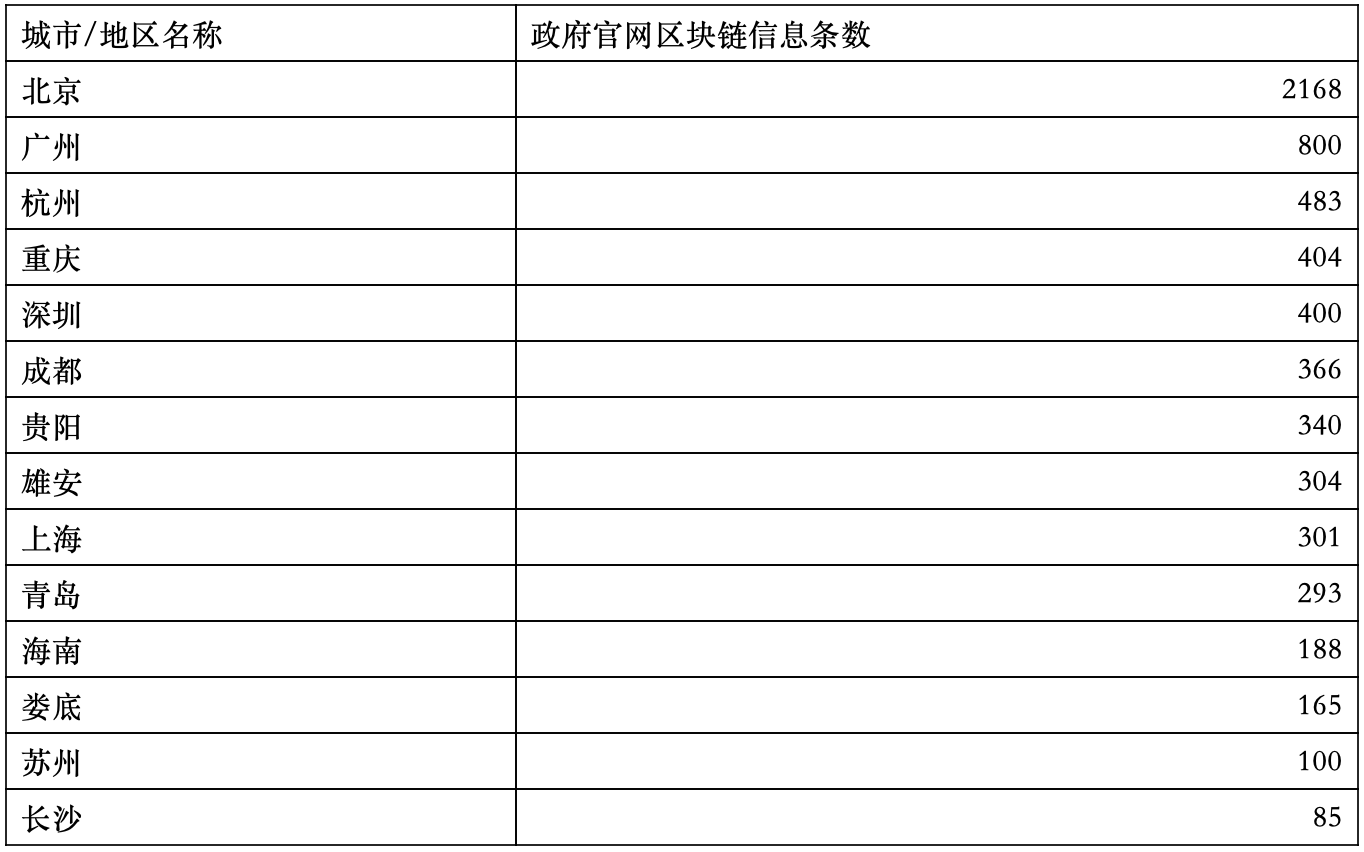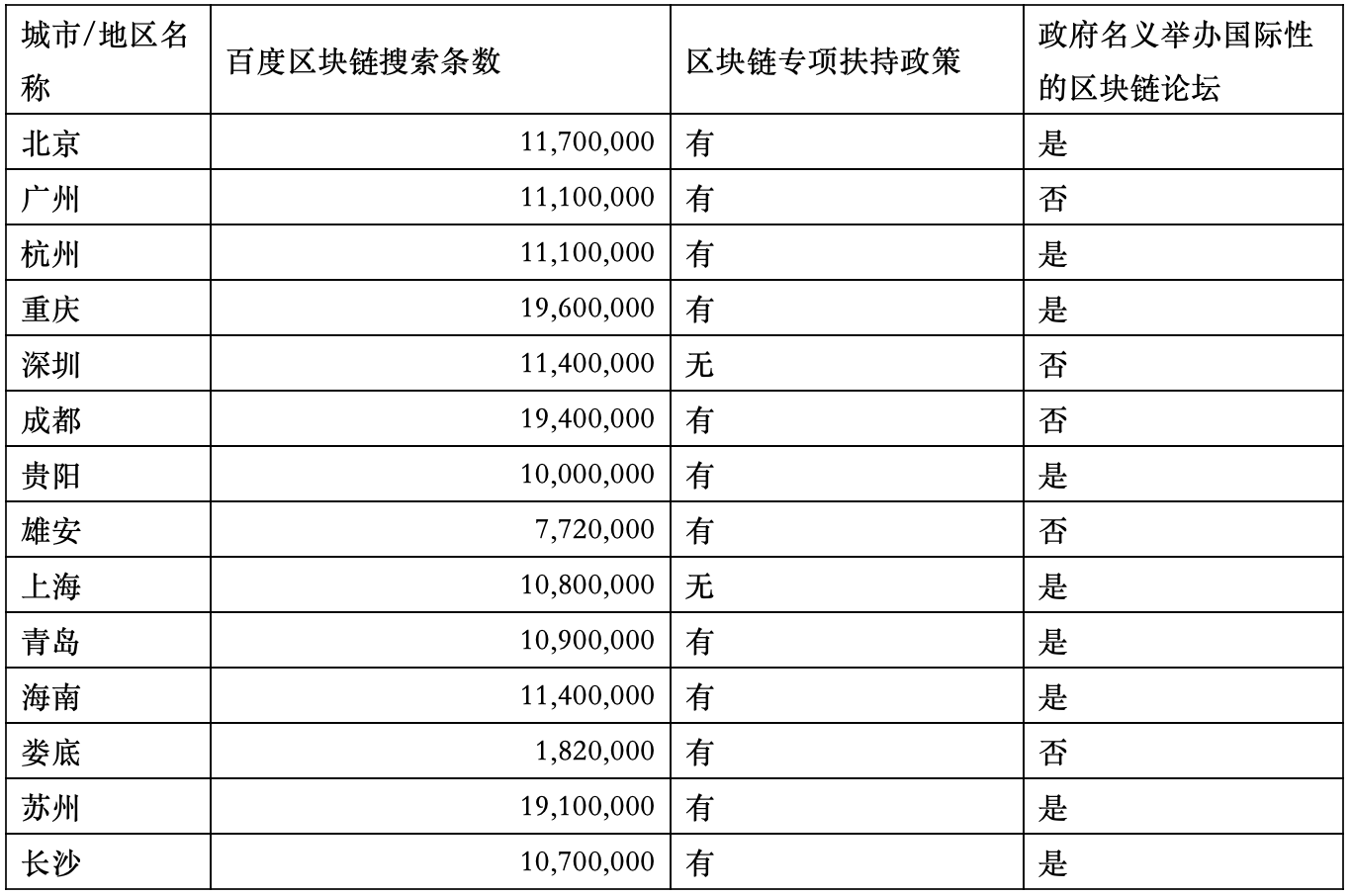Editor's Note: This article comes fromInterchain Pulse (ID: HiveEcon)Editor's Note: This article comes from
Interchain Pulse (ID: HiveEcon)
Interchain Pulse (ID: HiveEcon)
Hefei is on fire, because it has bet on the panel industry and the integrated circuit industry successively, and it is said that the floating profit is hundreds of billions, and it is known as the best venture capital. Now Hefei is betting on the new energy vehicle industry.
However, more and more cities are joining the camp of betting on the "blockchain" industry. "Chain City", "Chain Valley", "Chain Bay", "Chain Island", "Chain District" and other names emerge in endlessly. This year, Harbin and Changzhi successively announced that 1 billion yuan and 1.8 billion yuan have been invested in the construction of the blockchain industry. More places are also adopting the practice of government paying to build the blockchain industry. For example, according to news on June 18, Xiongan is building 20 blockchain application scenarios, which will be open to blockchain innovation companies.
So who bet the most? At present, it is difficult to count financial input. The author observes the bets on the blockchain between cities based on some side indicators.
secondary title
Blockchain highlights 14 urban areas
According to the activities of participating in the blockchain, Interchain pulse screened 14 cities or regions for price comparison. They are the four first-tier cities of Beijing, Shanghai, Guangzhou, and Shenzhen; the six new first-tier cities of Hangzhou, Chongqing, Chengdu, Changsha, Suzhou, and Qingdao; Loudi, a third- and fourth-tier city that took the lead in using blockchain as an urban strategy, and the Hainan region, which has just issued a free trade port policy (because Hainan’s policy consistency is relatively strong, it is the first place for comparison).
To develop an industry in a place, a local consensus needs to be formed. The consensus will eventually be condensed into individual policies, individual documents, and individual news items.
The inter-chain pulse searched the official websites of various governments, and counted the number of information mentioning the blockchain in the full text, and found a very interesting phenomenon.
The Beijing Municipal Government website records the most blockchain information, with a total of 2,168 pieces. In the last month alone, a whopping 258 messages containing the blockchain have been released. For example, "Government service blockchain scene runs out of Haidian acceleration", "(Xicheng) District Market Supervision Bureau applies "blockchain" technology to promote enterprise deregistration facilitation", "The municipal government held an executive meeting to study the innovation and development of the city's blockchain Action plans and other matters", "Daxing government affairs use blockchain technology to cover 115 service items in daily life"... Beijing's blockchain has a sense of sight blooming everywhere in various districts.
The official website of the Guangzhou Municipal Government records as many as 800 pieces of information including blockchain, ranking second to Beijing. But the information content is quite different from Beijing. Take the last month's information as an example. Guangzhou is basically all kinds of support policies for the blockchain. For example, "Policy Interpretation of "Implementation Rules for the Management of Special Funds for Promoting the Development of Small and Medium-sized Enterprises in Guangzhou Development Zone, Huangpu District, Guangzhou", "Notice of the General Office of the Guangzhou Municipal People's Government on Printing and Distributing Implementation Opinions on Comprehensively Promoting the Construction of a Social Credit System in Guangzhou", "Guangzhou Issued Heating Enterprise Policy 2.0".... These government documents all contain the content of the application of blockchain.
It is worth noting that although the administrative setting of Xiongan New Area is very new, the amount of information related to blockchain on the government website exceeds that of Shanghai.

Xiongan is also focusing on the application of blockchain. For example, recent content includes "Hebei Xiong'an blockchain technology innovation practice has entered the landing stage", "Hebei Xiong'an New District will open 20 blockchain application scenarios to enterprises", "Enter Xiong'an! New building materials in Gaoyi County The industry enters Xinhuanet's Traceable China Credible Brand Empowerment Program".
Comparison of the number of blockchain content on government official websites in 14 regions
image description
(Tabulation: Interlink Pulse)
In addition to observing the data on the government’s official website, the author also compared Baidu’s search volume, special support policies for blockchain, and international blockchain conferences supported by the government.

14 Regional Blockchain Other Data Comparison
image description
(Tabulation: interlink pulse)
secondary title
Betting on whether the blockchain can make a city
Looking back at Hefei, because betting on panels and integrated circuits brought autumn fruits to the city. And these industries require a large amount of capital investment, the cost of industrial migration is high, and there are leading companies to take root. Also successful is the optical communication industry in Wuhan. The moats of these industries are particularly high. If you look at the direction and bet on investment, you may get industrial results.
This is different from the current construction of blockchain cities in various regions. As a technology, the blockchain itself does not require a large amount of investment, and the company currently does not have an absolute leader, and the migration cost is very low.
Right now, the author understands that many cities are attracting large-scale investment in order to develop the blockchain industry, trying to attract enterprises to take root with more favorable policies.
In order to obtain local projects, some enterprises set up subsidiaries one after another. As a result, there are more and more subsidiaries in the enterprise, and the management cost increases. But once there are no projects to do, or there are better policies elsewhere, it is easy to migrate out.
On the other hand, the selected industries in Hefei are all import substitution, which means that the selected industries are all proven and can be developed.
But there is no man's land ahead of the blockchain industry. The large-scale investment of the government may not be able to exchange for the healthy development of the industry. There have been many government-invested blockchain projects that have been unfinished.